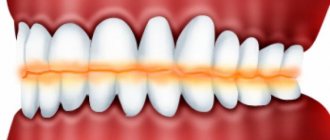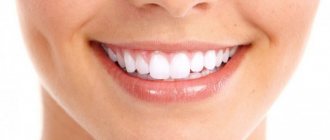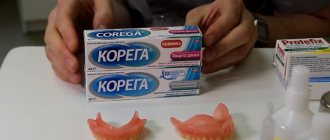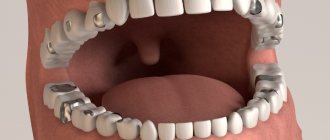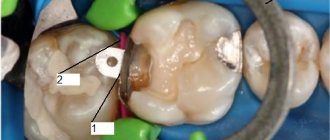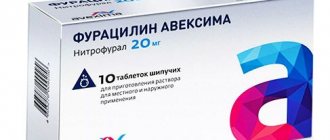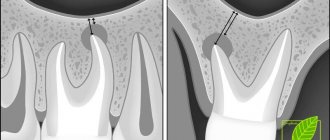Correction of dry nasal mucosa
Most modern people quite often experience unpleasant sensations characterized as “dryness of the nasal mucosa.” It is expressed in nasal congestion, often alternating, itching, burning, crusting in the nasal cavity, and decreased sense of smell. In addition to the feeling of discomfort, dryness of the nasal mucosa negatively affects the filtration function of the nose - dust particles, bacteria and viruses contained in the air almost freely enter the lungs during breathing.
Various factors can lead to dryness of the nasal mucosa. Quite often, “dry nose” is a side effect of certain medications, primarily antihistamines and drugs containing atropine. The most common is the adverse effects of climate and ecology, staying in rooms with central heating and air conditioning. The humidity of the nasal mucosa is negatively affected by inhalation of hot air, in particular from smoking, rarefied air (during air travel and vacations in the mountains), dust in the air in a number of industries - cement, chemical, etc. In addition, this condition can also be a symptom of a general disease.
The mucous membrane of the nasal cavity is covered with a special ciliated epithelium, consisting of ciliated cells that ensure the transport of mucous secretions (Fig. 1).
Ciliated cells have 250–300 cilia, 7 microns long and 0.3 microns high. Each cilium consists of 9 pairs of microtubules arranged in a ring and surrounding two unpaired central microtubules. The movement of the cilia of the ciliated epithelium of the nasal mucosa is carried out through the sliding of microtubules (Satir P., 1974). Energy for movement is provided by ATP, which is broken down by dynein. Dynein is a Ca/Mg-dependent ATPase. The motor cycle begins with the addition of ATP to the dynein molecule. Cleavage of the phosphate ring during ATP hydrolysis leads to the connection of the dynein molecule and the tubulin molecule of the adjacent outer doublet and is accompanied by conformational changes in the dynein molecule - bending and displacement of the microtubule at a certain distance. This, in turn, causes a new ATP molecule to attach to dynein and break its bonds with tubulin, causing the dynein handle to return to its original shape. The whole cycle is repeated again (Kiselev A.S., Tkachuk I.V., 2006).
The movement of the cilia is strictly directed - from the vestibule of the nasal cavity towards the nasopharynx. Mucociliary clearance is provided by nasal secretions. The source of the secretion covering the epithelium of the nasal cavity is the mucous glands of the nasal mucosa, goblet cells, extravasation from subepithelial capillaries, lacrimal glands, and the secretion of specialized Bowman glands from the olfactory zone of the nose. The volume of nasal secretion in 24 hours ranges from 100 ml to 1–2 liters. The mucous membrane of the posterior two-thirds of the nose is renewed every 10–15 minutes. The function of the cilia is optimal at a temperature of 28–33 °C, a sufficient amount of secretion with a pH of 5.5–6.5. Loss of moisture, a decrease in temperature to 7–10 °C, and an increase in the pH of the secretion to more than 6.5 causes the cilia to stop vibrating.
Elimination of dryness of the nasal mucosa is facilitated by applying an isotonic solution to it. At the same time, the rheological properties of mucus are normalized. It is believed that trace elements contained in an isotonic solution, such as Ca, Fe, K, Mg, Cu, help to increase the motor activity of cilia, activate reparative processes in the cells of the nasal mucosa and normalize the function of its glands. The listed microelements are contained in preparations that are prepared from sea water, sterilizing it and bringing the salt content to isotonic concentration (Otrivin More, Marimer, Aqua Maris, Salin, etc.), and from mineral spring water, which has medicinal properties (salt).
One of the new drugs in this group is Otrivin More, which is a purified, disinfected isotonic solution of ocean water from Brittany, extracted in an ecologically clean area of the Atlantic Ocean, rich in natural microelements. It contains 18 minerals and trace elements.
We examined and treated 50 patients of both sexes aged from 21 to 43 years with complaints of “dry nose” caused by prolonged stay in rooms with dry and/or rarefied air. In the treatment of the main group (25 patients), Otrivin More was used in the form of irrigation of the nasal mucosa 2 times a day for 10 days; in the second (control) group (25 patients), an oil solution of tocopherol acetate and retinol palmitate in the form of drops 2 times a day. The distribution of patients by gender and age, as well as by the severity of clinical manifestations in both groups was comparable. Every three days, the dynamics of the main symptoms were assessed: difficulty in nasal breathing, dryness in the nasal cavity (including the patient’s subjective sensations), the nature and amount of nasal discharge, the state of mucociliary transport (saccharin test).
At the end of the course of treatment, a positive clinical effect was obtained in 42 patients, of which 23 were from the main group and 19 from the control group. In 8 (16%), including 6 from the control group (24%), no positive dynamics were recorded. In the group of patients receiving Otrivin More, the regression of pathological signs was significantly more rapid compared to the control group, which was confirmed by the results of a study of mucociliary transport. On average, the decrease in mucociliary transport time with the use of the drug was 6.9 minutes. In the control group, this figure was 4.3 minutes (Fig. 2).
Changes in mucociliary transport parameters correlated with rhinomanometry data and changes in the clinical picture, which took into account subjective symptoms assessed using a patient questionnaire. The drug was well tolerated by all patients. In addition, all patients noted the ease of use of the drug, while the use of oil drops by the majority of patients in the second group (24 people) was characterized as “inconvenient.”
Thus, Otrivin Sea can be recommended as a means for caring for the nasal cavity not only for patients with rhinitis, including atrophic ones, but also as a means of daily hygienic care for the cavity during the heating season, as well as for people who stay in dry rooms for a long time. and/or rarefied air.
Literature
- Satir P. How cillia move // Scientific American. 1974. Vol. 231. P. 45–46.
- Kiselev A. S., Tkachuk I. V. Spray Aqua Maris for diseases of the nose and paranasal sinuses // Pharmacy Weekly. 2006, March 27, No. 12 (533).
O. V. Zaitseva , Candidate of Medical Sciences, National Research Center of Otorhinolaryngology, Federal Medical and Biological Agency of Russia , Moscow
Mucosal care products
A well-known domestic pulmonologist, academician of the Russian Academy of Sciences, Professor Alexander Chuchalin, recommends carefully caring for the mucous membranes of the nasopharynx and oral cavity to increase the local immune response as part of the prevention of COVID-19 [2]. Along with hygiene procedures, it is important to maintain optimal hydration of the mucous membranes - this will help avoid the formation of microcracks. For this purpose, you can use saline solutions, sea water solutions to irrigate the nose and throat. Let us remind you that there is no scientific evidence that regular rinsing of the nose with saline solution can protect against the new coronavirus infection. An argument in favor of using products based on sea water to irrigate the nasal mucosa is the season of hay fever, which we are gradually entering.
We must not forget that the virus can penetrate through the mucous membrane of the eyes, which also requires care. To prevent dryness of the conjunctiva of the eye, you can use ophthalmic agents designed to moisturize the mucous membrane.
Frequently asked questions about vulvar kraurosis
What causes kraurosis of the vulva?
The exact causes of the disease have not yet been established. It is assumed that viruses and infections, hormonal changes, disruption of the endocrine system, and autoimmune processes can serve as trigger factors.
How can I tell if I have vulvar kraurosis?
The main symptoms of the disease are itching, dryness, pain in the vestibule of the vagina, tightening of the skin of the perineum. Over time, the clitoris becomes smaller, the labia minora becomes thinner, the entrance to the vagina narrows, and the tissues atrophy.
Is it possible to cure lichen sclerosus?
The disease cannot be completely cured, but properly selected therapy can eliminate unpleasant symptoms and improve a woman’s quality of life.
Prognosis and prevention
How to cure kraurosis of the vulva is unknown. Usually it is not completely cured, but properly selected therapy helps reduce negative symptoms and improve a woman’s quality of life.
Basic clinical recommendations for vulvar kraurosis:
- observe the rules of personal hygiene;
- do not wear synthetic or tight-fitting underwear;
- do not use sanitary pads;
- do not use gels, sprays and deodorants in the intimate area;
- to refuse from bad habits.
The disease requires regular consultations with a gynecologist and ongoing treatment. A properly selected diet and a calm emotional state are of no small importance.
Composition and release forms
The active ingredient of the drug has a long scientific name - dioxomethyltetrahydropyrimidine. It stimulates the activity of the immune system, has the ability to accelerate the division of healthy epithelial cells, prevents the accumulation of exudative masses, and reduces inflammatory tissue reactions in various pathologies and injuries.
Methyluracil is available in several forms:
- Ointment for external and local use: contains 10% active substance, petroleum jelly, lanolin and water. It is a yellow or yellowish-white oily viscous mass with a characteristic medicinal odor. Packaged in metal tubes or jars weighing 25–50 g.
- Suppositories: torpedo-shaped suppositories of light yellow color with a waxy texture, with a dosage of the active substance of 500 mg, containing solid paraffin, petroleum jelly and other auxiliary components. Packaged in contour plates with cells, the cardboard packaging of the drug contains 10 suppositories.
- Methyluracil tablets: with a dosage of 500 mg, flat-cylindrical, uncoated, white, bitter in taste. Packaged in 10 pieces in metallized blisters and cardboard packaging.
You can buy 10% Methyluracil ointment in pharmacies without a prescription, but to obtain the drug in tablets and suppositories you will need a doctor's prescription.
Denial of the problem
In ENT practice, drug-induced rhinitis is considered a common problem, which remains unobvious to the average person, a non-specialist. At the same time, the consequences of constant use of vasoconstrictors are quite serious. First of all, this is the suppression of the natural functions of the mucous membrane - moisturizing and warming the air, resulting in the formation of crusts and bruises. Patients report constant dryness in the nose. And due to a decrease in mucus production, there is a sore throat and hoarseness of the voice. Reduction of blood vessels in the thickness of the mucous membrane leads to atrophic changes and thickening of mucus-producing glands, which further increases nasal congestion. By constantly using these means, people, without knowing it, provoke irreversible changes in the nasal cavity.
Methods for treating drop addiction
Despite the seriousness of the developing changes, the problem is quite easily solved. Both conservative and surgical treatment are possible - the optimal tactics are determined in consultation with a doctor, taking into account the patient’s priorities. According to research, courses of drugs with an anti-inflammatory effect (fluticasone, mometasone) effectively relieve inflammatory changes in the nasal mucosa and in approximately 80% of patients, dependence on drops disappears within a three-week course. If such tactics do not lead to positive dynamics, the possibility of surgical treatment should be considered. This is a short and quick procedure that is almost one hundred percent effective, so that the vast majority of patients no longer resort to the use of vasoconstrictors after surgery.
In my practice, I often encounter anxiety among patients before starting treatment. This is not surprising, I have met people who ran to the pharmacy in the middle of the night for sprays or abandoned the car in a traffic jam due to lack of spray; they simply did not go out into the street without the treasured bottle. Therefore, modern tactics involve not only drug therapy, but also a psychological explanation that the moment will soon come when you no longer want to take out the spray and splash it, because the nose can breathe freely. It is a great happiness when free breathing lasts longer than the effect of the sprays allows. I advise everyone not to delay treatment and effectively solve this simple but significant problem with the help of a doctor.
Causes of kraurosis of the vulva
The exact etiology of lichen sclerosis has not yet been established. Since the pathology most often occurs in women 45–55 years old, its onset is associated with a decrease in estrogenic activity. However, this does not explain the reason for the development of the disease in young girls. In addition, there are isolated cases of lichen sclerosis in teenage girls.
In this regard, it is generally accepted that the disease kraurosis of the vulva in women is a reaction to negative factors, which are divided into several groups:
- Viral-infectious - the disease occurs against the background of the human papillomavirus or herpes virus.
- Hormonal – kraurosis develops due to a decrease in estrogen production due to hormonal disorders or natural aging of the body.
- Neuroendocrine – the causes are due to diseases of the endocrine system or an imbalance in the functioning of the hypothalamic-pituitary system.
- Genetic – hereditary predisposition to the disease.
- Autoimmune – the etiology of the disease is associated with autoimmune processes in the body.
- Mechanical - the cause of lichen lies in frequent injuries and chemical burns of the external genitalia, surgical interventions on the genitals, constant violation of hygiene rules (insufficient or excessive care).
Development of nasal congestion
The nasal cavity is an area that is actively supplied with blood due to a large number of venous vascular sacs in the thickness of the mucous membrane. They are necessary to perform important functions - warming and humidifying the inhaled air. Due to some reasons (colds, allergies), swelling of the mucous membrane occurs, which leads to difficulty in nasal breathing and nasal congestion. In most cases, it is temporary and goes away with the use of local remedies, such as vasoconstrictor drops and sprays.

